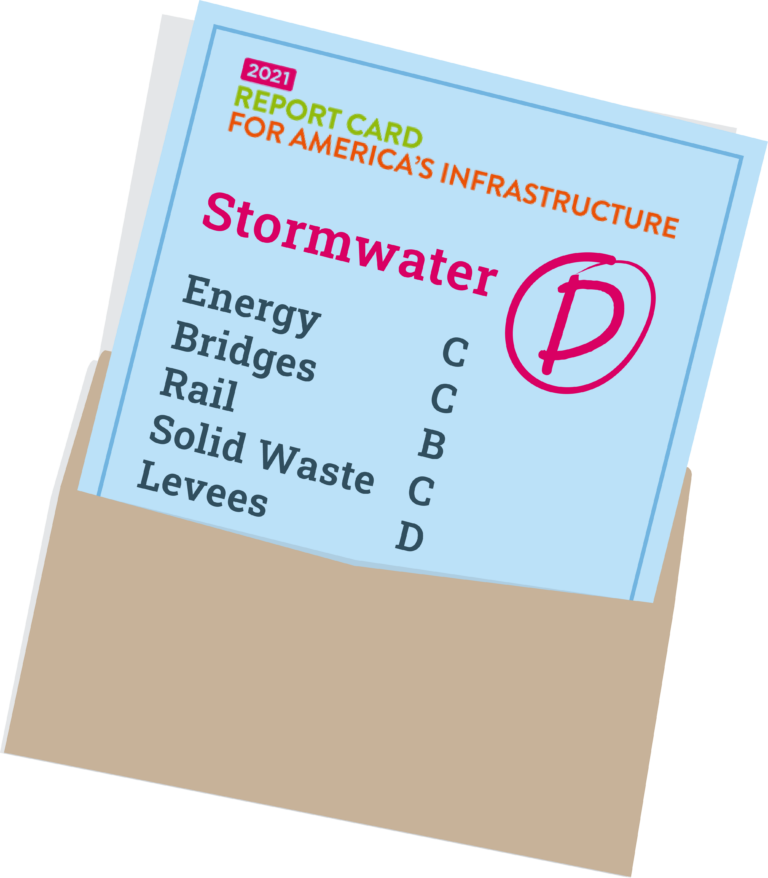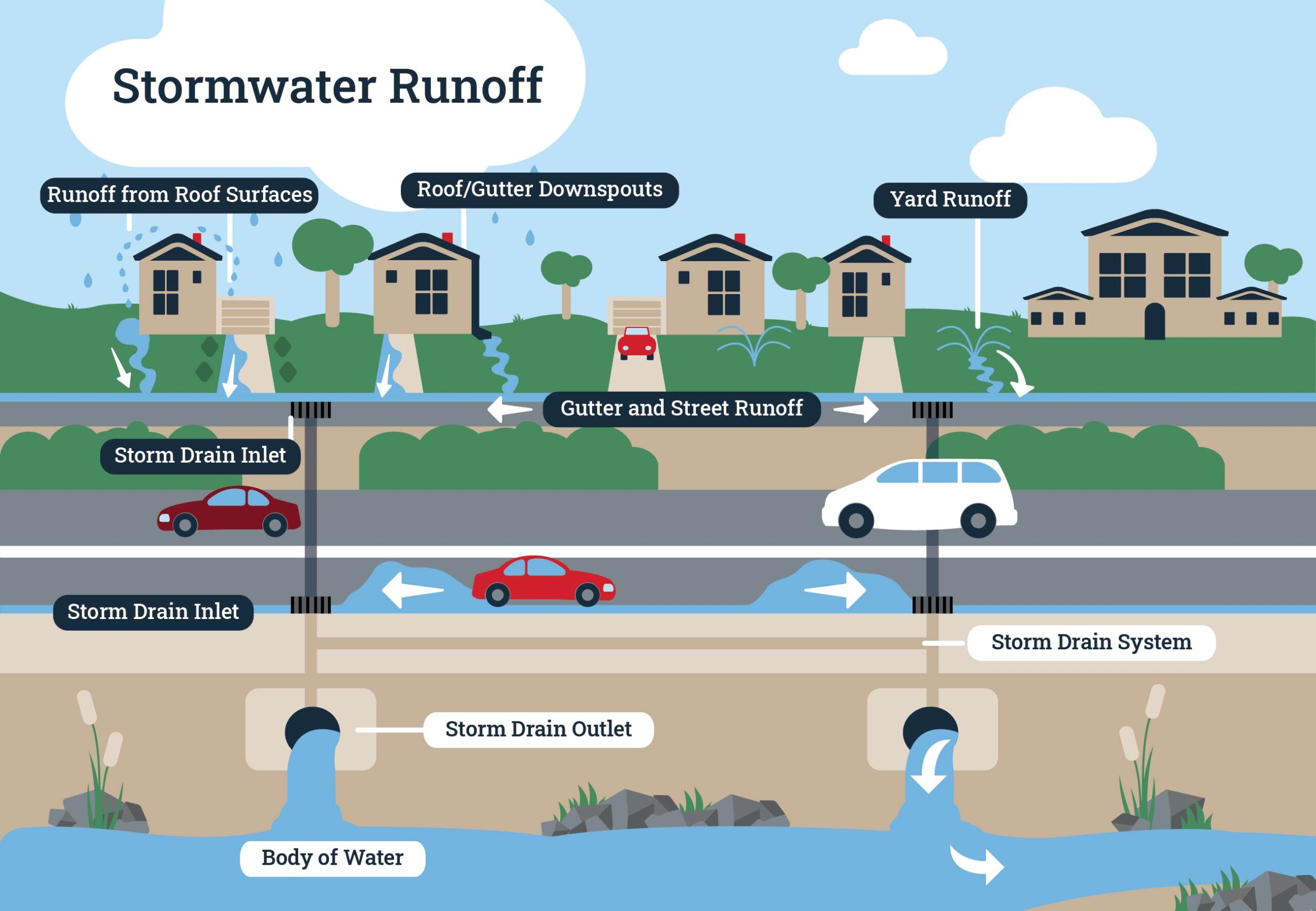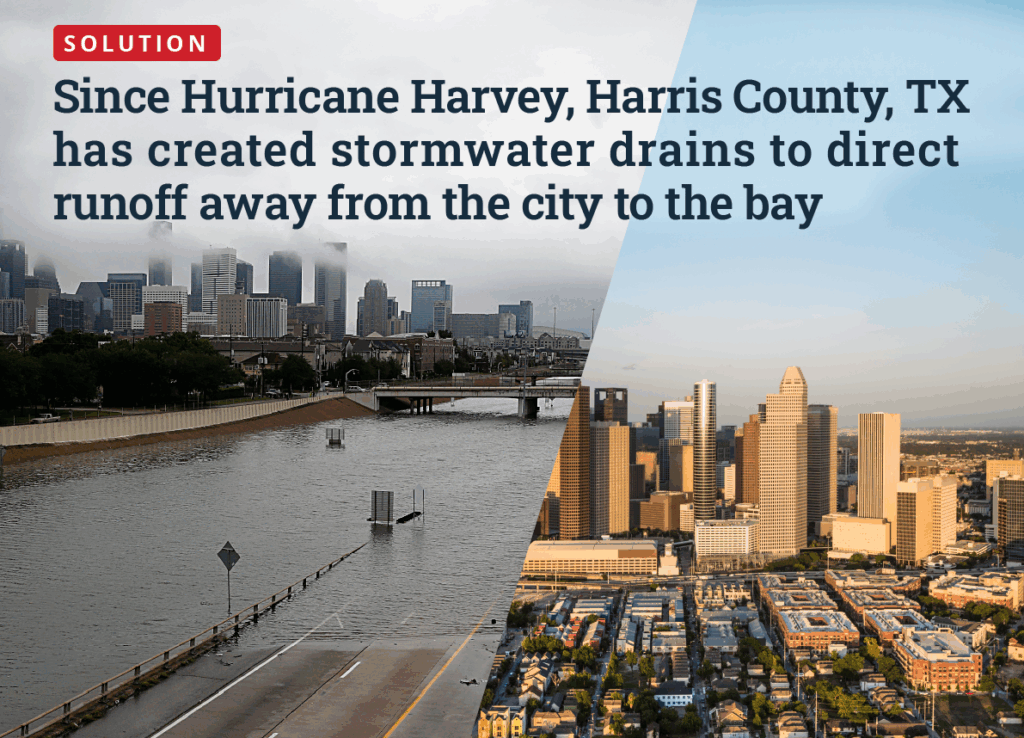Why Your Community Needs Better Stormwater Drainage
Very few counties actually have a sufficient stormwater drainage system for their flood problem
You can put away the magnet — America’s latest stormwater report card isn’t worth going on any refrigerator. The American Society of Civic Engineers’ 2021 infrastructure report card gave the country a D for stormwater infrastructure. Increasing development, rising seas, and intensifying rainstorms contribute to the country’s worsening flood problem and underscores the need for better drainage.

The Big Picture
Flooding affects 99% of all U.S. counties. The country’s stormwater infrastructure includes 3.5 million miles of storm sewers, 270 million storm drains, and 2.5 million stormwater treatment assets. That might sound like a lot, but it leaves Americans with far less protection than they need.
- What is stormwater drainage? Not all rain can soak into the ground, especially in areas without a lot of open space. Drainage gives excess water a place to go to prevent it from building up and causing floods. A series of above-ground drains, underground pipes, and open-air ditches combine to safely transport runoff to an area better suited to hold it, like streams, creeks, rivers, bayous, and oceans.
- Go deeper: Similar to sewers, stormwater drainage consists of a system of pipes and channels that transports runoff away from residential areas. Impervious surfaces, like roads and sidewalks, cause excess water to accumulate. Stormwater drainage systems help solve this problem by collecting the water and sending it downhill to prevent it from causing flooding. Above-ground pipes and ditches form a network that leads water into drains, grates, catch basins, and manholes, then through underground pipes to nearby bodies of water.
- The problem: Constantly expanding impervious surfaces in cities and suburbs exacerbate flooding and cause $9 billion in damages annually.
- Yes, and: Our aging drainage systems cannot withstand the increased rainfall and stronger floods of today. Updating and expanding drainage systems across the country is the only way to protect residents and decrease the cost of flooding.

Flooding isn’t just a national problem. Local municipalities need to take charge of their stormwater drainage and find the money to pay for it. Using various means of funding, like bonds and grants, $1 from taxpayers can equal $60 if cities are smart.
Why you need better drainage: Overwhelmed stormwater systems can cause flash floods and sinkholes, leading to collapsed roadways and extensive property damage.
Why your county needs better drainage: Drainage maintenance, expansion, and innovation can create jobs for the county and the investment will save money over time. One dollar of infrastructure investment can save $6 in flood damage, according to research from the National Institute of Building Sciences.
Take action: Almost all counties have some stormwater drainage system in place, but county commissioners need to be told what they have is insufficient. They need to hear that relying on an aging system that can’t handle more common and more powerful flood events is unacceptable. Take Harris County, TX for example. The county experienced extreme flooding during Hurricane Harvey in 2017. Since then, the county has made major upgrades to bring its infrastructure up to par: the county now has 2,500 miles of channels and drains that direct stormwater runoff along impervious surfaces to streams, creeks, rivers, and bayous and then to its final destination in Galveston Bay. That’s the kind of system your county needs.
- What experts say: “Excessive flooding over time, even minor events, can change how people live and how businesses and the community operate. This can cause detrimental economic impacts on real estate values and tourism, and other negative impacts to businesses,” according to NOAA.

The takeaway: Aging and ineffective stormwater drainage systems across the country cannot handle more frequent and intense flood events. Runoff can easily overwhelm existing systems of pipes, drains, and catch basins. Clogged entry points require routine maintenance to stay effective. Your county leaders need to do better to protect residents and businesses from flooding.